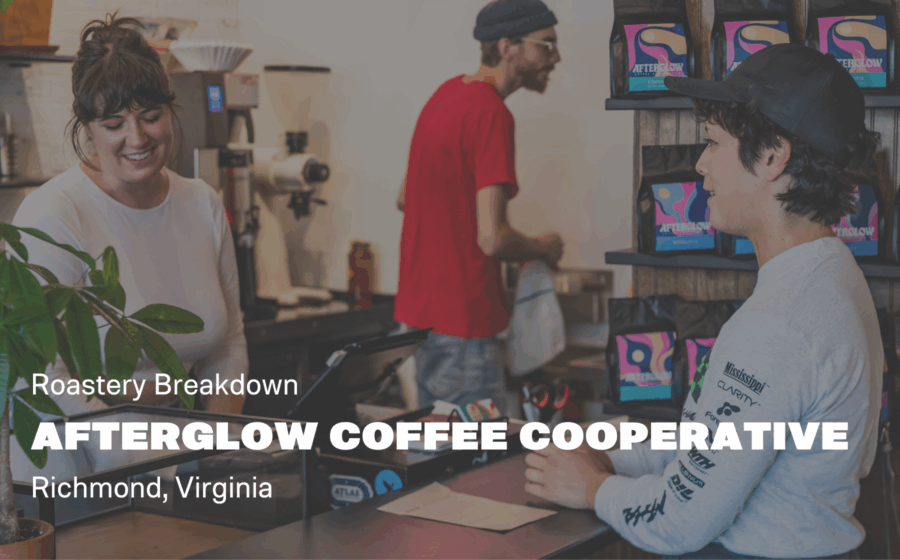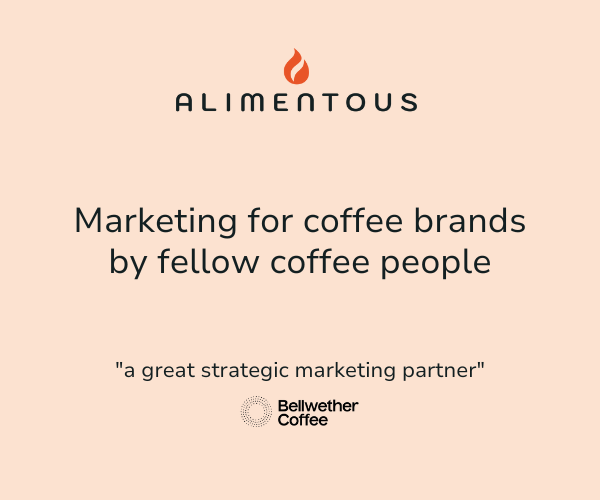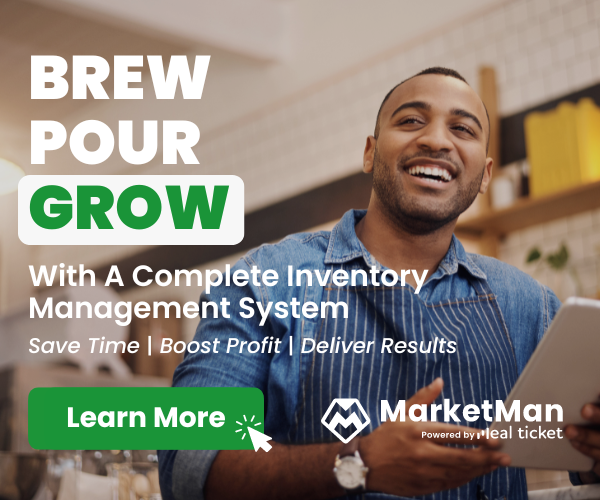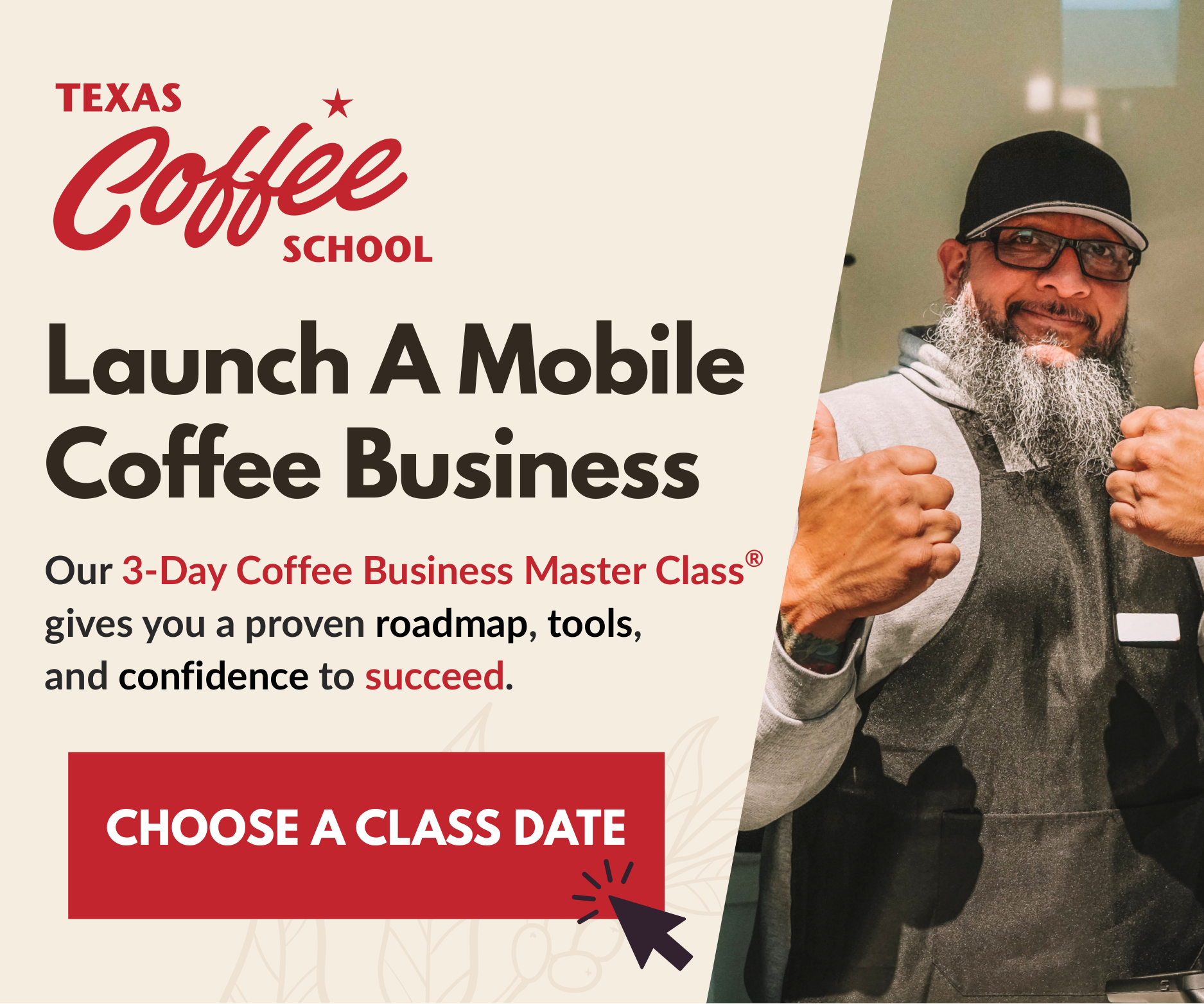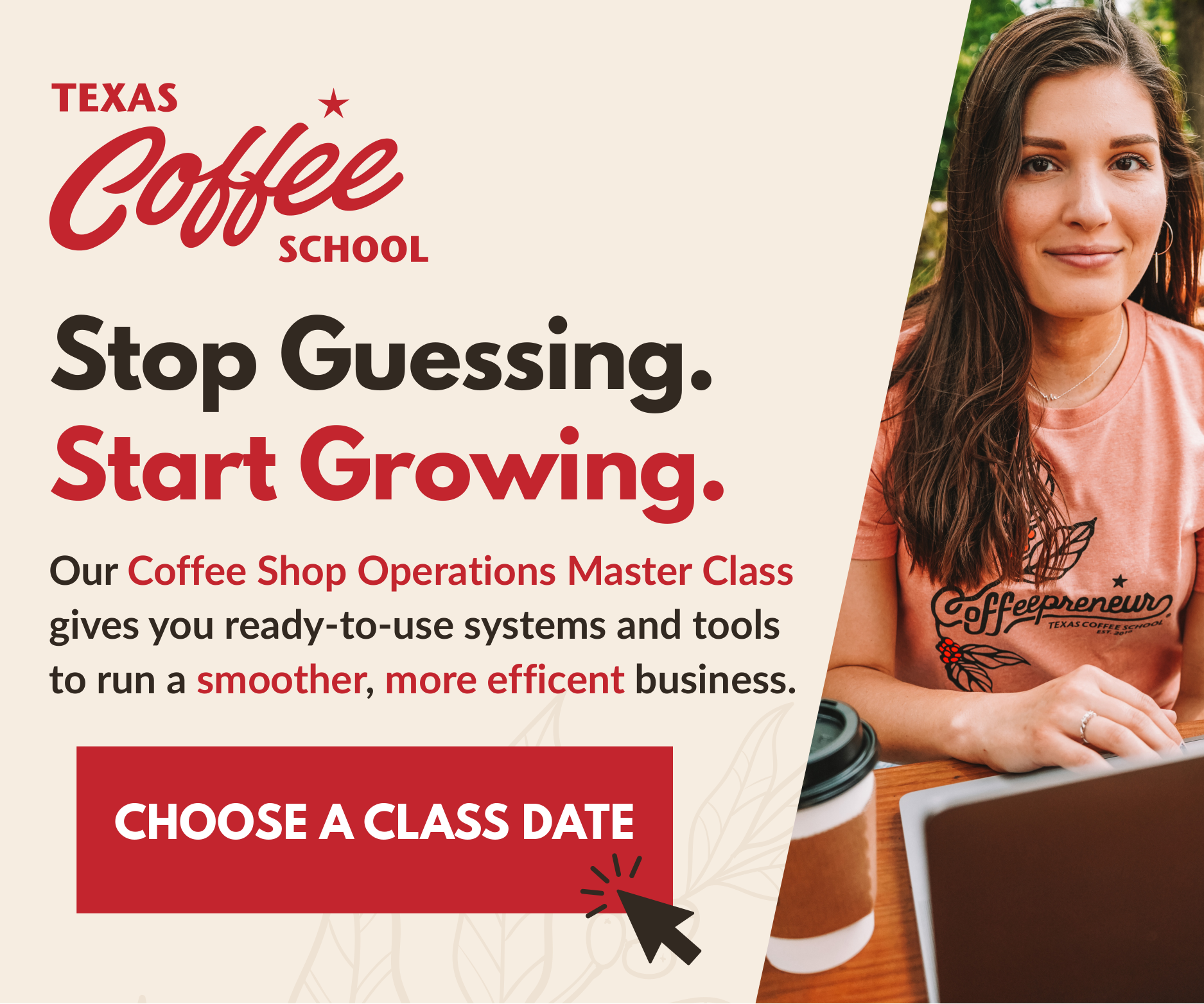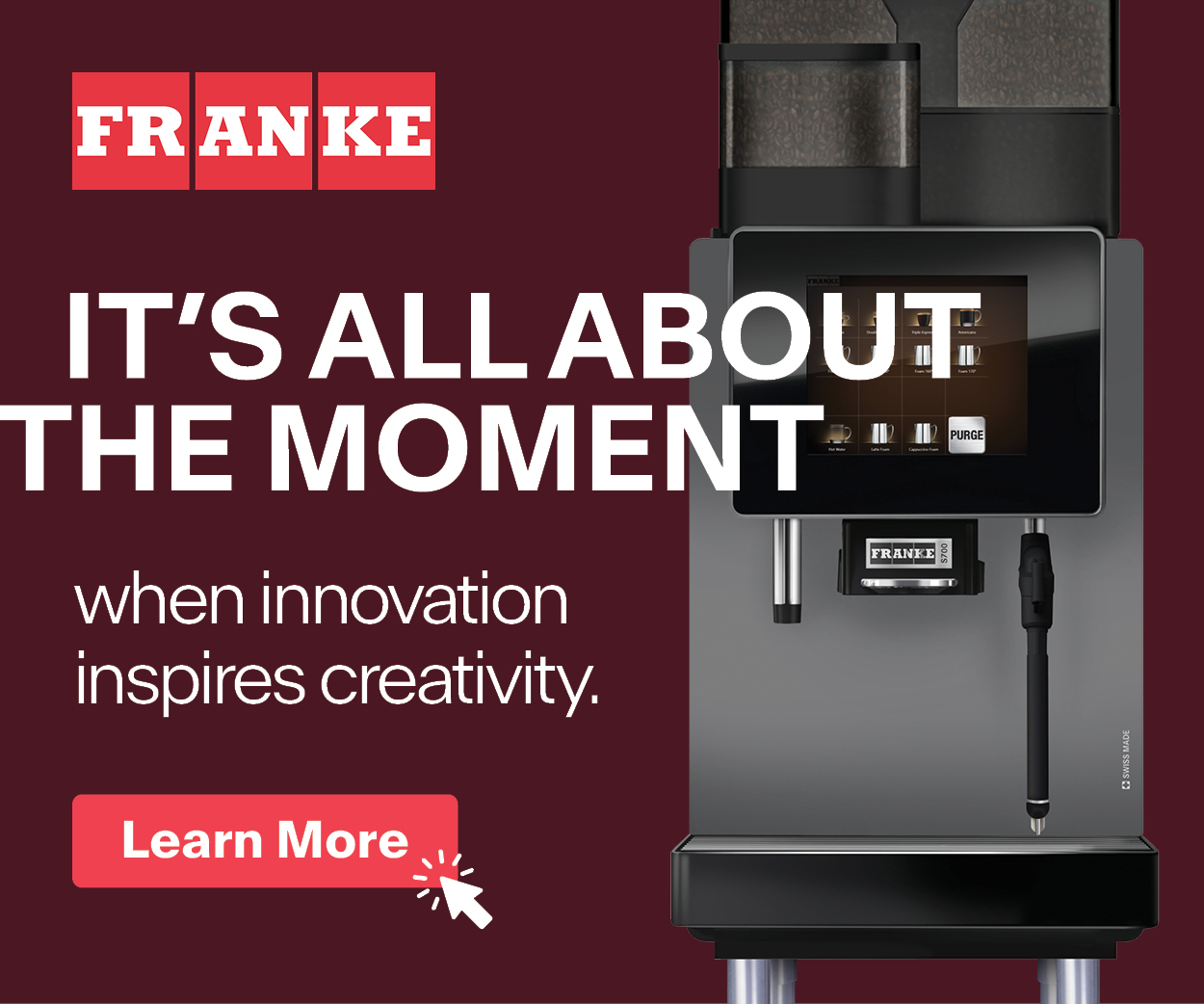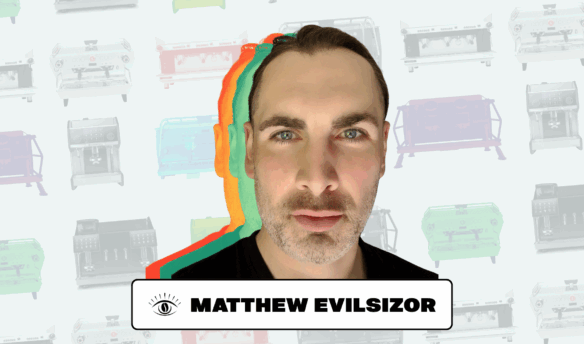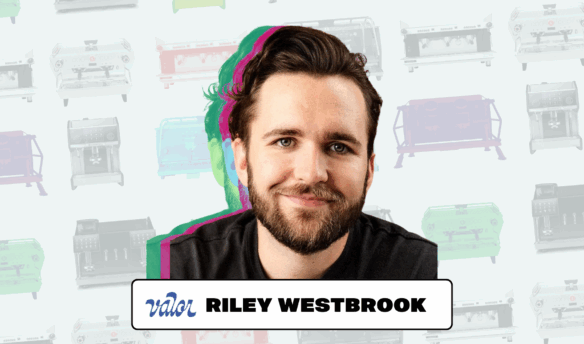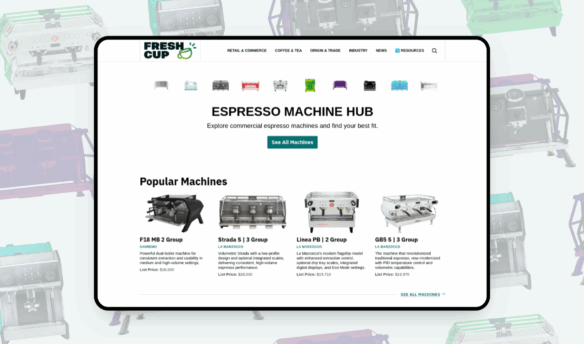The Roastery Breakdown series is presented by our partner, Loring.
“Are you the owner?” is a common question that well-meaning coffee patrons often ask baristas or managers they see working behind the bar. But what if the people working behind the bar or roaster really were the owners of the business?
That’s the case at Afterglow Coffee Cooperative in Richmond, Virginia. Afterglow made headlines as the first worker-owned roastery and cafe in the city when, in 2021, five employees of local favorite Lamplighter Coffee Roasters bought the roastery side of the business and committed to making it a worker-owned cooperative.
The business, which is split up as a coffee shop in the front and roastery in the back, was one of two Lamplighter locations, operating as its roastery and second cafe. During the early days of the COVID-19 pandemic, Lamplighter closed the cafe section. Later, the original worker-owners of Afterglow purchased that building and operational setup.
“I hate to say it, but COVID really was the opportunity and the radicalizing push that I think a lot of people needed to make changes in the world,” says Alan Smith, worker-owner and green buyer for Afterglow.
Smith began as a barista at Lamplighter in 2010, then moved to roasting and green buying around 2014, and was one of the five original owners of Afterglow. “We had decided that if we weren’t able to buy the business that we would just start something independently,” they say.
The co-op began as a group of baristas searching for ways to build a future in a shifting industry. Over time, it has grown into a business where worker-owners are asking tough questions about longevity in a coffee career—questions that many in the profession have, but which are all too often brushed aside.
Worker-Ownership
Smith says the goal for the cooperative was to create a business that offered a sustainable, long-term career path for coffee workers. “There should not be any job that does not pay a sustainable wage … There’s a reason why people leave coffee, because that system doesn’t exist—the schema where you are a skilled craftsperson leveling up year on year like a tradesperson,” Smith says.
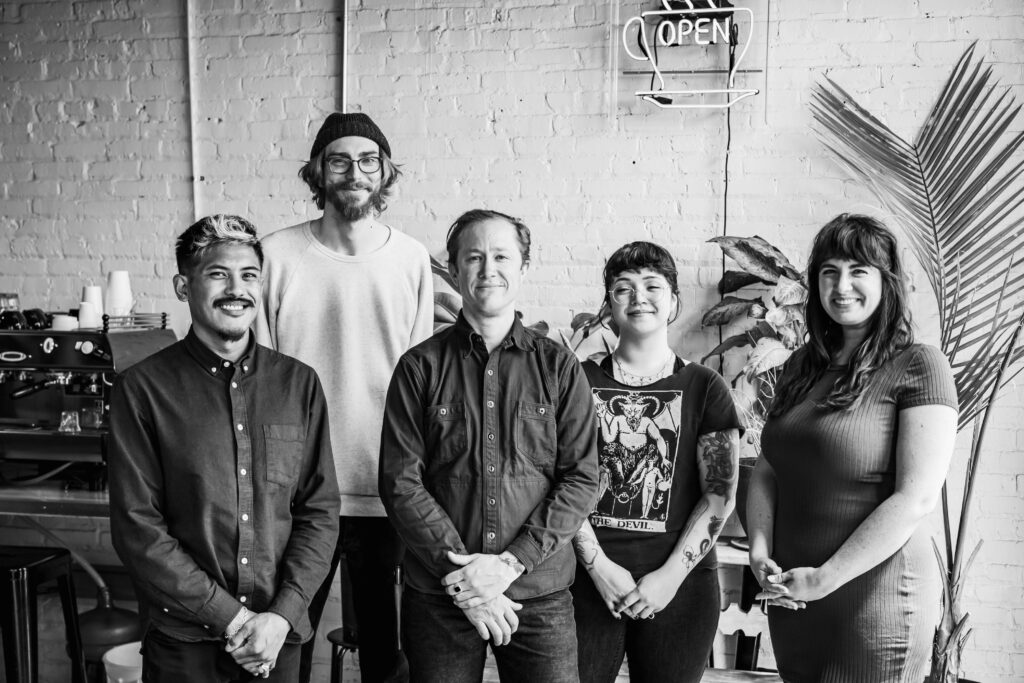
Being part of the cooperative means being a part-owner of the business. When someone gets hired at Afterglow, they work for a six-month trial period as an hourly barista, so everyone can assess if the fit is right. Once the trial period is over, if everyone feels that that employee should be an owner, they have the choice to opt in. Owners either invest $6,000 upfront or accrue sweat equity through a reduced salary.
Running a business as a cooperative isn’t a one-size-fits-all model. None of Afterglow’s five original co-founders had experience in running a cooperative before—but Smith and the others pitched ideas and worked to create their operating strategy. “We’ve been making it up as we go along, which feels scary but necessary,” Smith admits. “There is not a model that I’m aware of to base this on.”
In the state of Virginia, there is no legal designation for a cooperatively owned business. After consulting with a lawyer who specialized in worker-owner businesses, the team incorporated Afterglow as an S Corp. That type of business structure includes an operating agreement that allows current Afterglow owners to change the number of owners by referendum.
In many ways, the cooperative works like other coffee companies. Smith says that “the process of consensus-building is easier” because making decisions as a collective is built into the framework of the business. Even if someone isn’t a part-owner, they’re still part of the decision-making process.
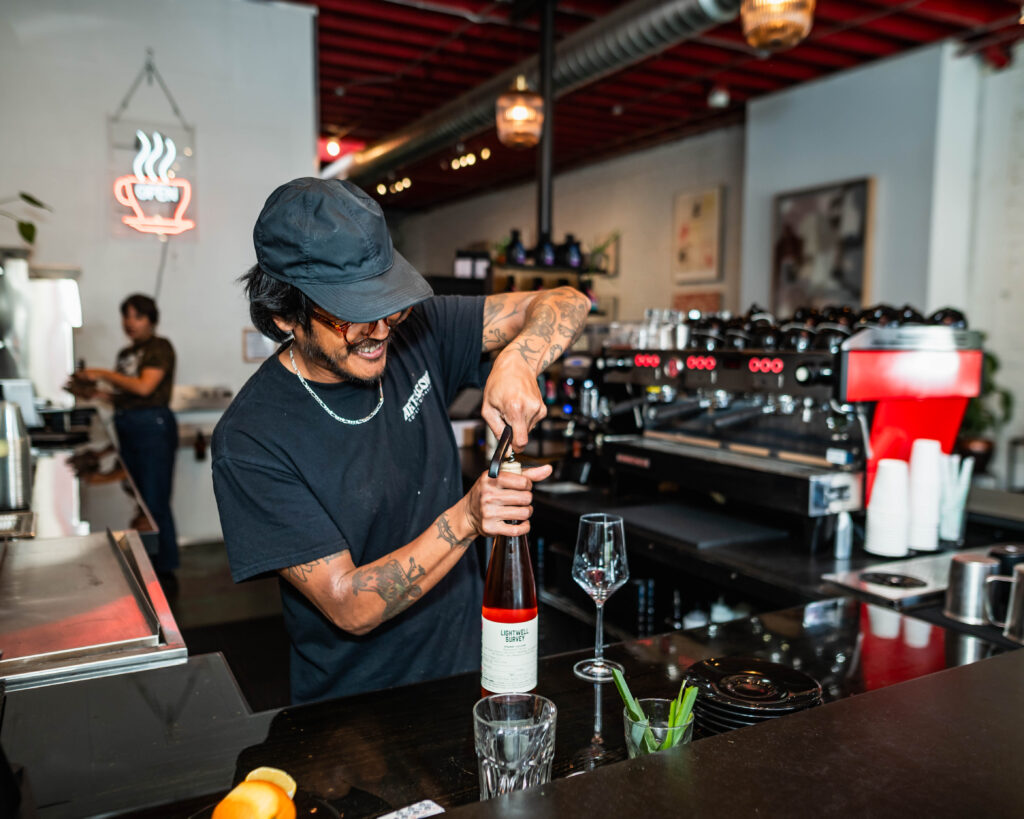
“Consensus is based not on owner decisions, but member decisions, so anyone working here is able to add notes to the agenda meetings, sit in on meetings, make comments on any topic,” Smith says. “Anything that is an actionable item that we vote on and that people need to make an actual decision, you can weigh in on.”
Fast Facts
Roastery location: Richmond, Virginia
Footprint: 3,000 square feet
Pounds roasted: 5,000 lbs per month
Retail and/or wholesale roasting: Both
Equipment Breakdown
DR-25 roaster: At the end of July, the members of Afterglow made the decision to invest their profit shares (the parts of the profit paid out to each owner outside of their salary and operating costs) in upgrading their roaster. They grew from a DR-12, made by Diedrich Roasters, to a larger model, the DR-25.
Afterglow had reached the point where “we just can’t roast any more coffee,” Smith says. Along with supplying coffee for its retail space and webstore, the business has a large wholesale program and toll roasts for Lamplighter’s remaining cafe.
The decision to invest in a new roaster resulted from an exhausting roasting schedule to meet those demands. “Right now, we’re estimating our pars, like hundreds of pounds of each blend, that we roast Thursday, Friday, and Sunday, just to fill Monday,” Smith says. “We were doing 24 hours of work just to meet one single day of production … [The new machine] was an absolute necessity.”
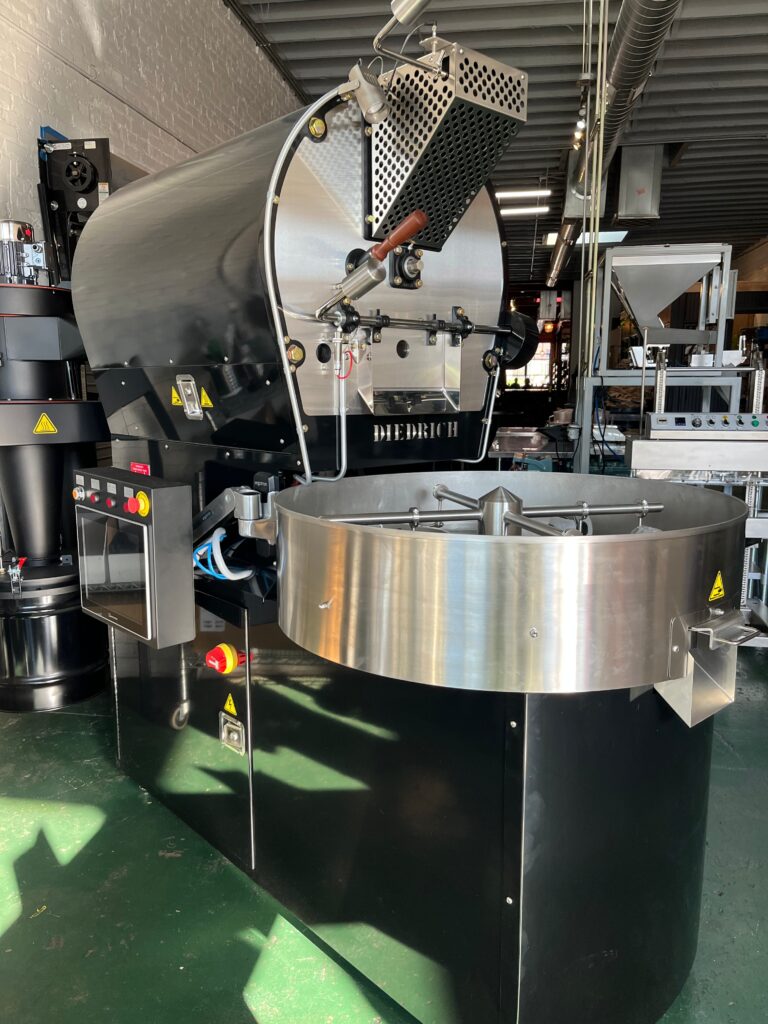
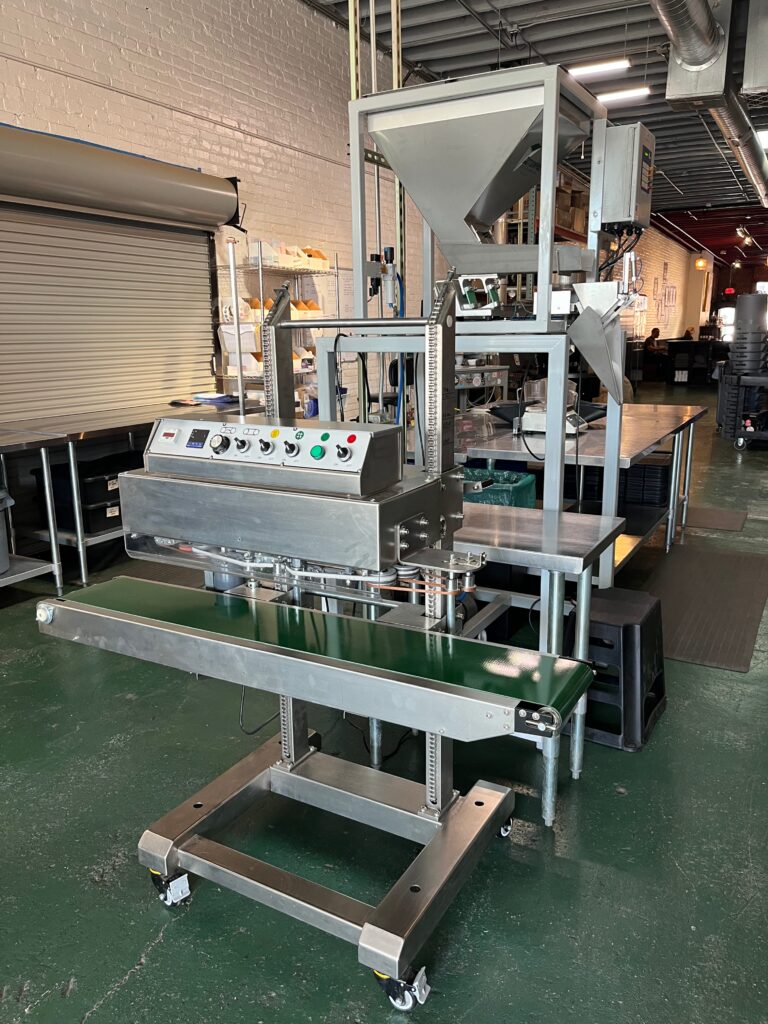
Smith says forfeiting the worker-owners’ profit share might seem like a loss, but the decision was made by consensus because the group saw the investment as a way to scale the business. “This new roaster will be like [an additional] team member … we can double our output with no extra labor,” Smith says.
Directionality in the roastery: Flashy tech gets a lot of attention when talking about roastery operations and efficiency, but not all “tools” are singular products. Recently, Smith instituted a new, unidirectional approach to movement through the roastery. He believes that creating a path for employees and coffee “is smoother and easier to have things move in one direction where possible.”
The path begins with the delivery of coffee at the back of the roastery, after which it moves to the roaster. Once roasted, the coffee is transported via one of two lanes of travel: the manual side, which involves filling and sealing bags, or the automated side, with the weigh-and-fill machine and band sealer.
Band sealer and weigh-and-fill machines: Smith knows band sealers, machines that seal coffee bags, and weigh-and-fill machines, which fill bags with a set amount of coffee, are common, but that doesn’t negate how valuable they are at Afterglow. “The weigh-and-fill [machine] and band sealer are huge. I know they’re boring, but I did work for a decade with no help in the way of machinery,” Smith says.
Smith once believed doing all this work by hand—manually scooping and sealing bags of coffee—made the final bag feel more “handcrafted,” but in reality, it just took a toll on the body. “[It’s] a scam that I was sold as a baby barista about how things should be,” Smith says of the association between labor and craft. “You are just too young to realize that [the work] is stacking up, and when you get into your 30s, you can’t use your shoulder anymore from scooping beans for 10 years.”
Back office: Offices and storage spaces exist in every roastery, but Afterglow repurposed a walk-in fridge into an office and storage space for dry goods.
Smith joked that the walk-in fridge “was like a studio-apartment-size walk-in,” and far too big for the team’s needs. When the fridge compressor died, the worker-owners agreed to use the already demarcated space as an office and break room with shelves, a fridge, and snacks.
The black walls and cute windows were constructed out of architectural salvage to match the historic black vestibule at the front of the cafe.
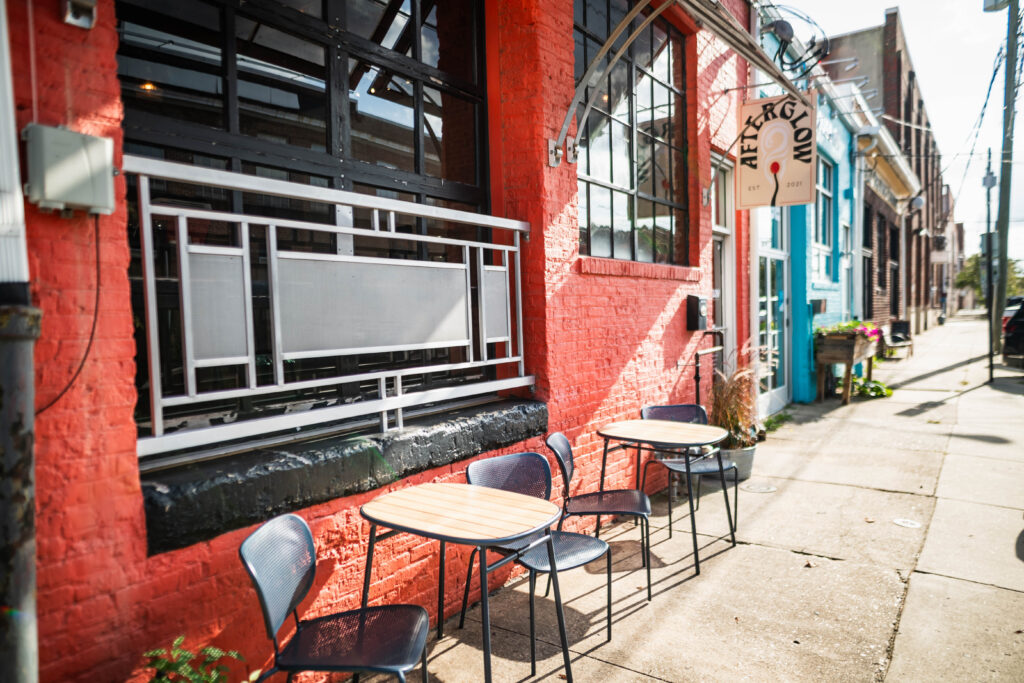
Pre-labeled bags: Earlier this year, Afterglow switched from bags that a person had to manually sticker to pre-printed bags. The pre-printed bags allow workers to spend less time labeling bags and more time on other duties around the roastery.
Worker-owner Allison Maves’ sister, illustrator Rachel Maves, created Afterglow’s newest label design. The labels got a refresh when the roastery swapped its plain black bags for bright blue ones.
Smith says the team was thrilled with the pre-labeled bags. “The product doesn’t feel like anyone could just print a sticker and make it. It is a fully branded real thing, which feels good.”
Decision-Making and Profits in the Cooperative
In a cooperative business, profits that might otherwise go to a single owner are shared among the worker-owners. Like any business, revenue first goes toward expenses, maintenance, and payroll; what’s left becomes profit.
As mentioned above, the worker-owners have decided to use their profit shares for a new roaster, and Smith notes that the owners haven’t distributed profits to themselves yet. “We have yet to distribute profit-share, but we are hoping to do that for the first time this year. I’m still not sure what that scheme will look like.”
But Smith is hopeful, and the worker owners are pursuing other parts of their vision for the business. Beyond being a cooperative, Afterglow’s overarching mission can be summed up by a quote from Smith: “We are constantly asking, ‘What else could we do?’”
Besides redefining what a career in coffee can look like, the cooperative is also incredibly active in mutual aid. They’ve worked with groups like MADRVA, an organization that distributes goods for people in the community. Recently, they launched a campaign where $2 from each purchase of a specific coffee was donated to a relief organization providing food to Gaza. Afterglow is also a CSA box pickup site, and supports local farms.
Smith believes that a coffee shop can be more than just a place for a good shot of espresso. They hope to see more spots turn the spotlight on workers and build sustainable futures for baristas.
Smith sees the change coming. “It just feels like the next thing that’s coming has to be something more than just coffee.”



